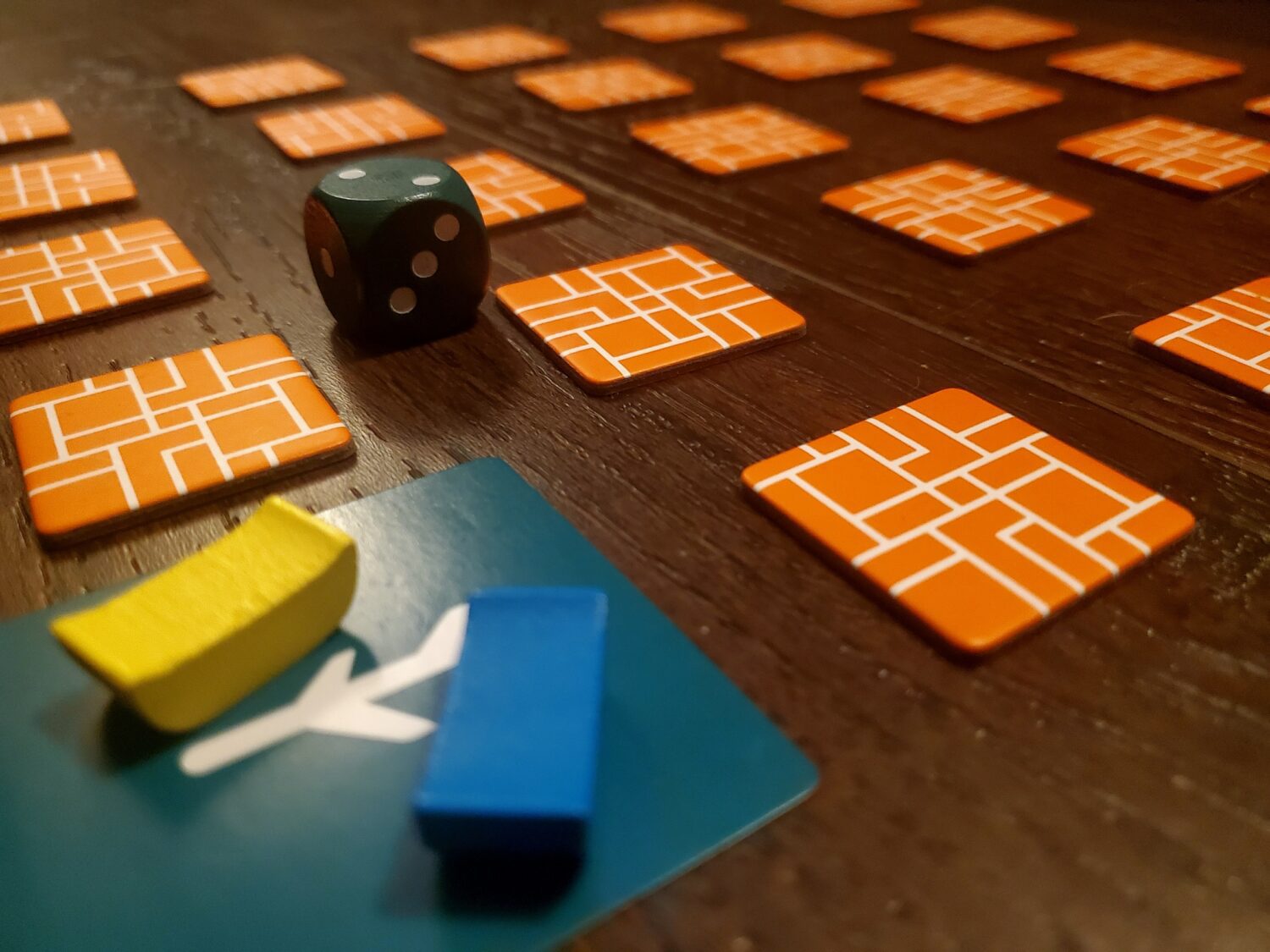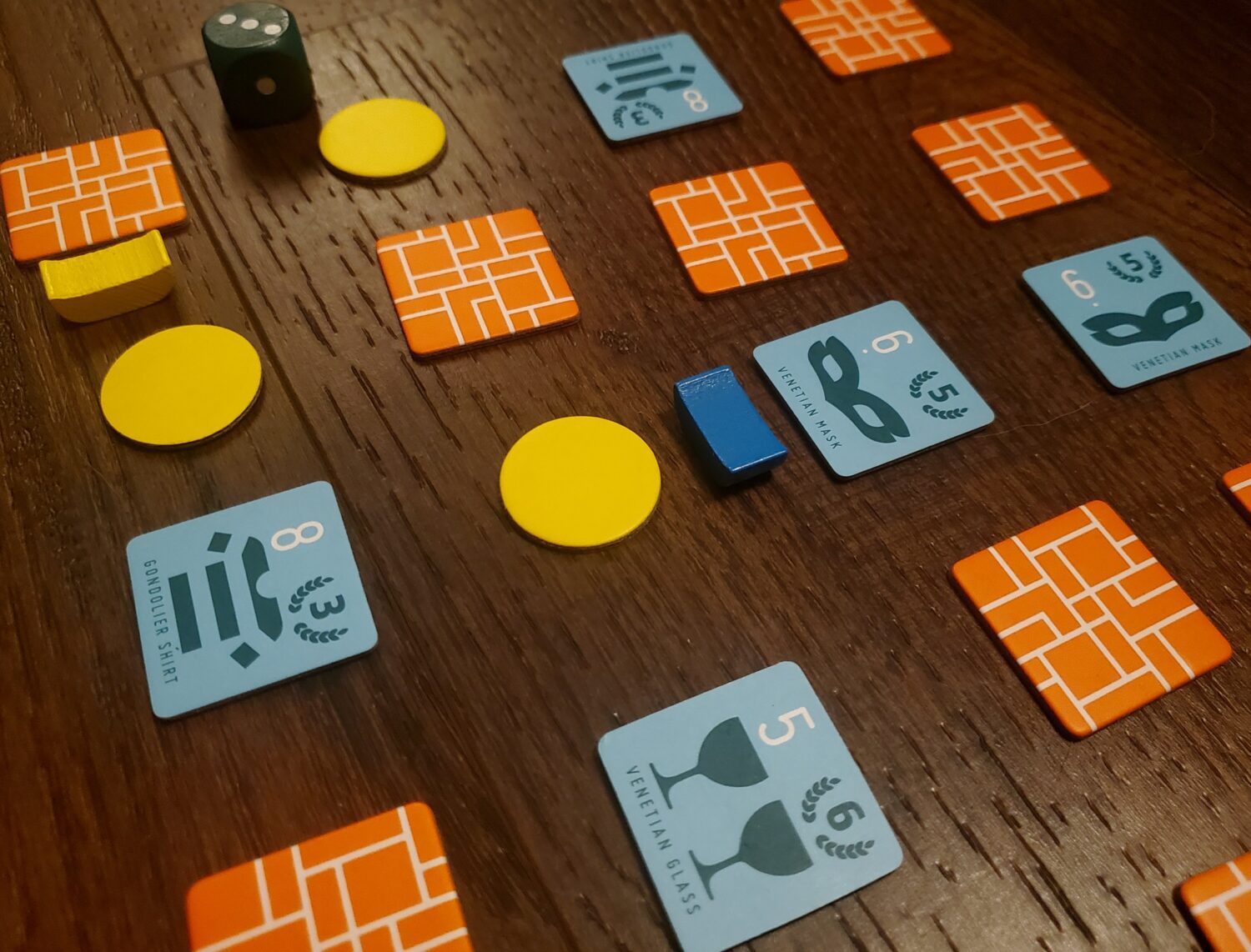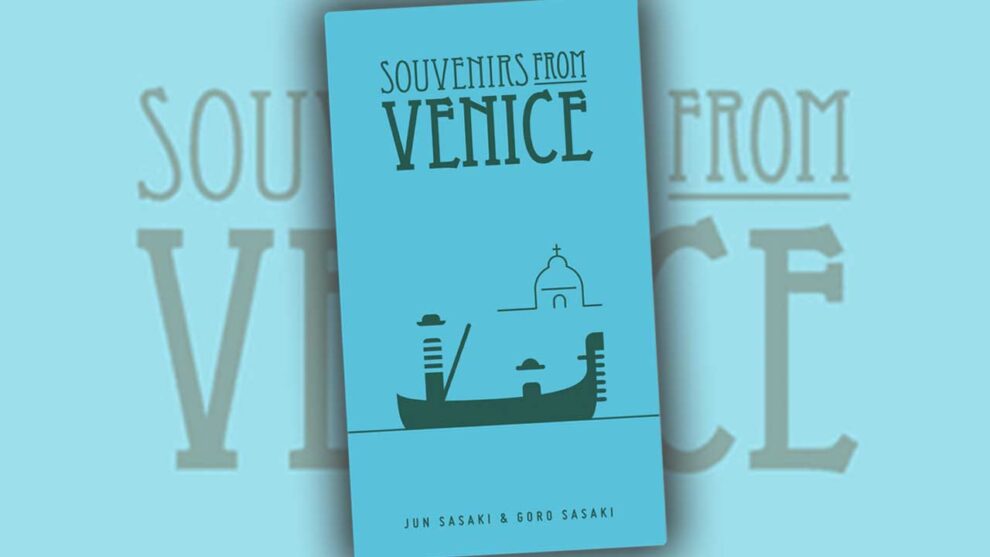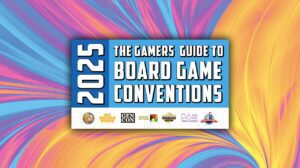Disclosure: Meeple Mountain received a free copy of this product in exchange for an honest, unbiased review. This review is not intended to be an endorsement.
If anyone out there has walked through a season of life that seems to impose a thirty-minute time limit on leisure time, you probably know the value of Oink Games. Somewhat similarly, if anyone out there has walked through a season of life that involved a hearty desire to pack four games onto a single shelf rather than three or four, you also know the value of Oink Games.
Enter Souvenirs From Venice, a simple set collection race from Sasaki & Sasaki. It is one of several light blue Oink boxes—because let’s face it, we all spot Oink games by their color profile within the little brick walls we construct for funsies.
Ah, Venice!
The only other game I have played that involves moving along the aisles and intersections created by a grid of tiles is Minecraft: Builders and Biomes. I enjoy the decision space around moving to select the best pool of four options while simultaneously choosing the location most prohibitive to others. Souvenirs From Venice employs this concept and builds upon it through the addition of a metaphorical hourglass.

Players begin navigating gondolas through the waterways from a common corner marked as the Airport. The object of the game is to set out on a tourist-y adventure and hopefully collect two sets of three matching souvenirs before returning to the Airport. But the game features a time crunch—anyone not in the Airport when the final tile is revealed is eliminated from contention for victory. (Side note: For utterly personal and nitpicky reasons, I would rather this had been a Port than an Airport. Missing the proverbial boat just sounds better!)
Every player turn begins by turning one of the grid tiles face-up, revealing the souvenir hidden beneath. In this way, the grid is constantly letting loose its secrets and enticing players to chase the most lucrative sets. The trouble, however, arises from the fact that movement—the next step— is dependent upon a die featuring ones, twos, and threes. It is easy enough to reach the farthest corner of the grid, but doing so all but guarantees a reliance upon the whims of the dice for the return journey as the final tiles come to light. Players are often stranded by the die’s stubborn refusal to yield anything but ones. Does anyone else feel that those rounded wooden dice are somehow always shaved to thwart their desires? Or is it just me?
Players have a choice each turn: peek at one of the four adjacent tiles with the option to buy, purchase a face-up tile, or—and this is where the hourglass is malleable—sell a tile, face down, back to the grid. Every tile bears a cost of one coin. To purchase or to sell is to swap a coin for a tile. This maintains the structure of the grid and keeps the economy simple. Players add and exchange in this way until the final tile flips. The grid is either 5×5 (2-player) or 7×7 (3-4 player), so the approximate game length is always on display like the sands of an hourglass.
There are two additional spices in the mix. Hidden somewhere in the grid, the Pigeon Feed Seller waits to upend all the best intentions. When a player reveals the Pigeon Feed Seller, everyone must pass a single tile to a neighbor. Yes, it’s as annoying as it sounds. The mechanic basically begs players to purchase a throw-away tile in anticipation. Of course, as players are limited to six total coins and/or tiles in the game, there comes a point in this preventative strategy where players must jettison the unwanted tile in favor of a gem and dash for the plane—which is usually when the Pigeon Feed Seller strikes, or one of his minions. Pigeon tiles cause the same effect if the Seller tile is already visible. There is no doubt Souvenirs From Venice messes with your life and best-laid plans.

Players in the Airport at the end contend for victory by adding the values of any achieved sets of three tiles. Players also subtract one point for tiles from incomplete sets. In the sprint to the finish, then, players must always weigh whether to get one great set and take their lumps or maybe snag two unattractive-but-available sets in hopes the other players won’t make it back due to their greedy vision. In a perfect game the dice cooperate and players actually get two decent sets with time to spare.
Eh, Venice.
I like the concept here, and the compact nature of the package. Truth be told, however, Souvenirs From Venice is not all that exciting, and it is riddled with welts from the wheel of Fortune. Players chase the obvious bests and the results are all about timely (read: lucky) discovery. Sometimes the dice unfairly cooperate, leading to a crushing victory. Sometimes the dice unfairly rebel, leading to crushing defeat. Sometimes the game plays out the way I imagine the designers Sasaki & Sasaki had in mind—with a bit of buying, a bit of planned passing, a bit of selling-as-stalling, and a tense duel with the dice as the final sands slip through the hourglass. I see it in my mind, but not always on the table.
I believe those results spill out in near-equal proportions, meaning only one in three games generates that truly satisfying buzz on the home stretch. On the flipside, Souvenirs From Venice is a just-north-of-fifteen-minute outing, so you might play more than once in the name of hunting a thrill, thereby increasing the odds of an interesting outcome. But about the time the Pigeon Feed Seller rears his ugly head, you just might find yourself cursing the charming waterways of Venice and running to your state room to bury your head beneath the pillow. (See, it just works better if it’s a Port!?)












